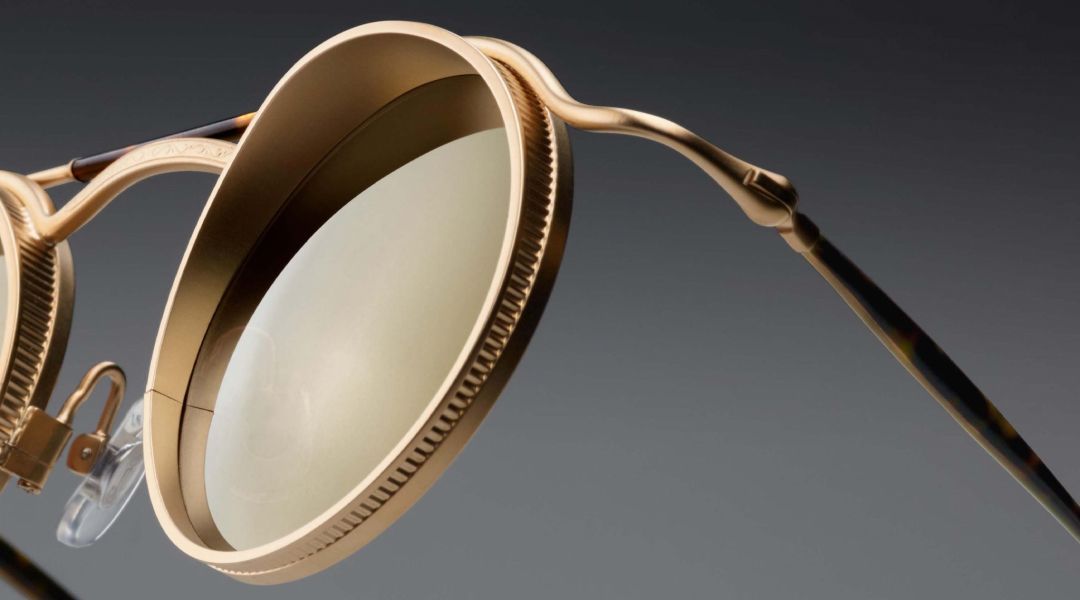Understanding Luxury vs. Designer Eyewear: Why to Choose Craftsmanship Over Labels

Read time: 5 minutes
When it comes to luxury eyewear, it's important to know that not all brands are created equal. High-end brand names that you've come to know and love might not hold the same level of prestige when translated into eyewear. The drive to monetize a brand's reputation has resulted in products that are more about making money and less about the craftsmanship and quality that it became known for.
So, you might find yourself wondering if that brand you once trusted is still the real deal or just subpar, mass-produced products pretending to be high-end. Let's explore the differences between brand-name designer eyewear and true handcrafted luxury eyewear.
Profits Over Quality & Craftsmanship
In the world of luxury eyewear, there's no one-size-fits-all rule. Some brands show off their prestigious labels, but not all of them live up to the hype. In pursuit of profit, large corporations often cut corners on the quality of materials and craftsmanship that make high-end brands stand out, all for the sake of making more money. The whole idea of looking super, luxurious is just a cover for making products quickly to keep up with demand. In the end, it waters down the true meaning of real luxury.
This poses an important question for those seeking genuine luxury in their eyewear: Does the brand truly embody quality, or does it merely serve as a mask for products that fall short?
In a departure from the core principles of true luxury, some designers choose to capitalize on their brand names, essentially selling a label rather than delivering an authentically crafted product. This deceptive practice can lead consumers to mistakenly assume that a well-known designer's name guarantees a high level of quality. But the truth is, many of these items often miss the mark, lacking the artistic touch and careful craftsmanship that truly makes a luxury item.

Designer Brands May Not Be Designed By The Designer
The main problem is the disconnection between brand names and the actual process of designing and crafting eyewear. While certain designers have achieved celebrity status with their names becoming synonymous with luxury, in some cases, these designers are not actively engaged in the creative process for the actual eyewear bearing their name. Instead, large eyewear manufacturers acquire the licensing rights to use prestigious labels like Coach, Ralph Lauren, Michael Kors, Dolce & Gabbana, Chanel, Prada, and Versace to name a few. This makes it seem like the glasses are exclusive, but it's kind of like a trick.
Basically, these companies aren't really selling the designer's skill and creativity. Instead, they're selling the brand name's reputation and appeal. The eyewear business, which used to be about the artistic ideas of designers, is now more about the buying and selling of labels. The result is that real luxury brands are losing their genuine uniqueness.
A major indicator of this change is the abundance of low-quality designer eyeglass frames, usually from China, showing up in so-called boutiques and being marketed as a "luxury" item. Even though they carry a considerable price tag, these frames often aren't great in terms of materials and craftsmanship. It's a classic case of prioritizing style over substance, where consumers end up paying for a name rather than receiving a product of genuinely superior quality.

The Artistry and Authenticity of Luxury Brands
Authentic luxury eyewear brands invest time, creativity, and meticulous craftsmanship into every pair of glasses they produce. Moving beyond the mere commercialization of a brand name, true luxury brands work to craft designs that tell a story and develop styles that showcase their commitment to originality and innovation.
The hallmark of genuine luxury eyewear lies in the handcrafting of frames using the highest quality materials. True luxury brands prioritize excellence in every detail, carefully selecting premium materials such as Italian acetate or Japanese titanium. This commitment includes all aspects of production, including the hand-finishing process, which ensures not only durability but also creates a unique aesthetic that elevates each pair to the status of a work of art.
Furthermore, authentic luxury eyewear brands deliberately shun mass production in favor of small handcrafted batches. This intentional choice not only limits the availability of their products but also creates a sense of exclusivity and individuality. By steering clear of the mass market, these brands maintain a strong focus on quality over quantity, guaranteeing that each pair receives the attention and craftsmanship it rightfully deserves.

Embracing Genuine Luxury Eyewear
So, what distinguishes genuine luxury eyewear brands from their imitators? The key lies in their commitment to the fundamental principles that have long defined the industry. Authentic luxury brands set themselves apart by actively participating in the design process, crafting unique and original styles that reflect their artistic vision. These brands prioritize craftsmanship, opting for handcrafting frames using the highest quality materials available.
Consider the enduring legacy of iconic luxury eyewear brands - names that have withstood the test of time and are synonymous with craftsmanship and style. These brands carry a rich history of innovation, with designers deeply involved in the creative process. Rather than following trends, they continually push boundaries, setting new standards in the industry.
To understand the true essence of luxury eyewear, consumers must move beyond the allure of brand names and focus on quality and craftsmanship. While some may find contentment in the illusion of opulence a designer name may provide, those seeking genuine luxury look beyond the necessity and attraction of a label.
The Takeaway
Choosing luxury eyewear is like navigating a tricky terrain where paying attention is key. Don't just be dazzled by brand names; dig into the heart of how the glasses are made and designed. True luxury isn't just about a label; it's a commitment to artistry, originality, and the pursuit of excellence. As you navigate the ever-changing eyewear industry, appreciate the brands that stick to the values and principles that define genuine luxury. Always remember, in the eyewear world, not all that glitters is gold.
Explore our carefully curated collection of handcrafted luxury eyewear brands and experience true luxury - not faux opulence.
Share this blog post on social or with a friend:
The information provided in this article is intended for general knowledge and educational purposes only and should not be construed as medical advice. It is strongly recommended to consult with an eye care professional for personalized recommendations and guidance regarding your individual needs and eye health concerns.
All of Urban Optiks Optometry's blog posts and articles contain information carefully curated from openly sourced materials available in the public domain. We strive to ensure the accuracy and relevance of the information provided. For a comprehensive understanding of our practices and to read our full disclosure statement, please click here.


















